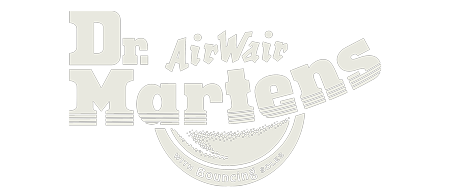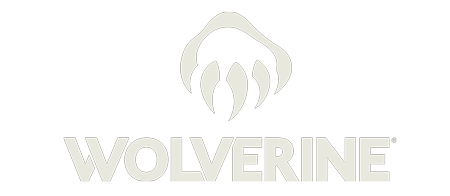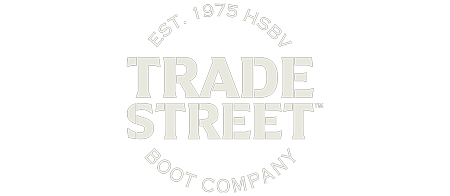Jun 18, 2021 / News, Safety Toe Footwear
Creating a Positive Work Environment: The Tactics You Never Thought Of

Did you know that the average person spends roughly one-third of their lifetime working? That’s a significant chunk of people’s lives which, if not spent in a healthy and happy environment, can have drastic impacts on their overall quality of life. While creating a positive work environment should always be a high priority for employers, it is especially important today when discussing the transition after COVID-19. In fact, employees expect more than just their compensation. They want to be able to walk into the office knowing that they are safe and in the best environment possible to perform their job how it’s supposed to be done.
Most individuals have been forced to work from home for several months, which has consequently lead many companies to re-evaluate their working environment. Companies know that they have a certain responsibility for cultivating a positive workplace environment for their employees. As we are now seeing today, a positive and supportive working environment can play a major role in an employee’s overall productivity. So, how can companies adjust their current office environment and overall practices to support the physical and mental health of their employees?
It’s not solely for the health of their employees (though this is a major incentive, especially after dealing with COVID-19). Companies can see impressive ROIs from implementing health and wellness programs, and satisfied workers are generally more productive and less likely to quit. And it avoids the downfalls of negative work environments (which include costly employee turnover and a poor business reputation). As we are now seeing through this pandemic, the physical health of employees can seriously affect a business’ overall success, which is why many companies are adjusting their current practices to shift towards a more hygienic, safe, and supportive office.
If you’re ready to boost employee morale, then let’s discuss how to create a positive work culture.
The Importance of Creating a Positive Work Environment
In the past, compensation was the primary consideration for job-seekers. Blue-collar workers wanted fair pay, attractive benefits, and job security. While these elements are still important, modern workers have come to expect more from their vocation. In today’s shifting landscape, employees have even higher expectations from their employers. As we are seeing now, many companies are having to face a new challenge: how to keep employees happy and healthy at all times, even in the wake of a pandemic. Job satisfaction now depends on:
- The opportunity to develop new skills.
- The ability to grow within the company.
- A healthy work-life balance.
- A sense that the work is meaningful.
- Recognition for a job well done.
- A safe and sanitary work environment
In white-collar spaces, companies have evolved to deliver on these expectations. However, many blue-collar spaces have yet to catch up. To successfully attract and retain blue-collar workers, companies must offer these features of a positive work environment.
The Costs of a Negative Work Environment
Organizational psychologists have conducted a wealth of interesting research on the relationship between work environments and job satisfaction. It shows how companies that value their employees’ experiences are rewarded with greater productivity and an improved bottom line.
In turn, companies that promote a cutthroat culture end up harming their own best interests. This is due to the hidden costs of increased turnover, employee disengagement, and a reduction in employee health.
- High Turnover: Turnover is costly for companies. On average, it costs 20% of a lost employee’s annual salary to replace them. Since nearly 50% of voluntary workplace turnover is caused by stress, improving the work environment can reduce expensive turnover.
- Disengagement: Disengagement may sound like a negligible issue, but it’s a lot more problematic than you’d think! Disengaged workers are absent 37% more often and cause 60% more mistakes. Companies with disengaged workers are 18% less productive, 16% less profitable, and have 65% lower share prices.
- Poor Employee Health: Most of us understand the harmful impact of excessive stress on our health. It’s no wonder that health care costs are 50% higher at “high-pressure” companies. Furthermore, around 80% of workplace accidents are caused by stress. Such accidents can result in costly injuries that require workers to take time off.
How to Create a Positive Work Environment
By now, you should understand the significance of a healthy work environment. So how can you enhance the workplace morale of your company? There are a few sure-fire ways you can transform your company’s culture for the better, emphasizing positivity and health every step of the way. Though there are numerous types of organizational culture, you can create a framework for your company that encourages the following:
#1 Prioritize Workplace Safety
Due to the nature of blue-collar work, companies need to go above and beyond to ensure workplace safety. Workers perform challenging manual labor that comes with the risk of injury. Not only that, but workers are often confined to enclosed working environments, which can be disastrous for spreading germs and illnesses, as we are seeing with COVID-19. A safe work environment should be both physically safe and free of toxic relationship dynamics.
Companies can enhance safety by:
- Investing in safe work equipment.
- Performing scheduled safety checks .
- Holding regular safety training sessions.
- Offering air-conditioned break rooms.
- Investing in proper HR protocol for injuries.
- Providing safety footwear.
- Following recommended hygiene practices
By going the extra mile to protect your employee’s safety, they will feel taken care of and valued. To help with this, Boot World offers a wide range of safety footwear at affordable prices. These boots protect workers from injuries, accidents, and slips that could harm them and cost your company a lot of money.
#2 Promote a Healthy Work-Life Balance
Work-life balance is the idea that employees should be able to find a reasonable equilibrium between their work responsibilities and personal life. A proper work-life balance prevents burnout and chronic stress, which can take a harsh toll on your workers’ productivity and engagement.
Blue-collar work often involves long hours of manual labor. Many workers work overtime, reducing their availability to tend to family and health matters. To make a work-life balance easier on them, foster a company culture that is understanding of workers and their personal needs.
Here are some aspects of work-life balance:
- Flexible Schedules – 88% of workers would consider taking a lower-paying job if it offered more flexible hours. Not only will flexible schedules attract applicants, but they’ve also been shown to reduce unplanned absences. Try offering staggered start times, the option to leave midday, and more part-time positions to your employees.
- Respect Family Obligations – Allow workers to tend to their families without harsh repercussions. For example, let workers come in earlier or later to fit their family’s scheduling needs. Encourage workers to enjoy their vacation time, rather than guilting them for taking it. Finally, don’t punish workers too harshly when unexpected life events get in the way of their work schedule.
- Treat Their Health as Your Priority – Make sure your workers know they won’t be chastised for going to doctors’ appointments or taking days off when they’re under the weather. During the COVID-19 pandemic, many companies are allowing their employees to work remotely in order to reduce unnecessary exposure. If employees must go into the office to do their job, it is highly recommended that employers enforce social distancing within the workplace. As an employer who manages a team, it is your duty to ensure the health of your workers at all times. By prioritizing their health and wellbeing, you’ll enjoy loyal, engaged employees who want to pay it forward through working hard at your company.
#3 Create Greater Fulfillment Through Goal-Setting
A sense of meaning and purpose is critical to living a fulfilling life. Achieving goals is one way to cultivate meaning and purpose within the workplace. Reaching goals is inherently fulfilling, as it gives the sense that you’re growing and moving forward.
Goals fight against feelings of stagnancy. And stagnancy is a company killer.To enhance your workplace culture, set goals for individual employees on a regular basis. Celebrate when those goals are reached. Fueled by a sense of purpose, your workers will appreciate their role within your company. They will derive meaning from their contribution to your company’s success.
#4 Encourage Positive Social Bonds
Did you know that your chances of dying early are 70% higher if you lack meaningful social relationships? Poor social connections are more dangerous than obesity, smoking, or excessive drinking, according to research. On the flip side, positive social connections promote:
- Less frequency of illness
- Quicker recovery from surgeries
- Decreased depression
- Greater mental acuity
- Faster learning
- Improved job performance
Since people spend so much of their time at work, an optimal work environment includes healthy social bonds. To promote positive relationships between your workers, host events where they can build upon friendships with coworkers. For example, you could schedule a weekly happy hour, host an annual retreat, or organize a company-wide sports team.
As your workers enjoy stronger social bonds, they will have a more positive attitude at work, leading to enduring job satisfaction. In turn, you’ll notice greater productivity, team spirit, and employee well-being.
#5 Recognize Your Employees’ Achievements
Blue-collar employees are some of the hardest working people you’ll ever meet. Their jobs are physically demanding and require persistence, strength, and commitment. When giving so much to a job, it’s nice to be recognized.
Whether you choose to showcase a worker of the month in your weekly meeting or newsletter, it’s important to find a way to give thanks for a job well done. An employee recognition program can offer more positive reinforcement within your workplace. Not only will this put a smile on your workers’ faces, but it will instill even more pride in their work going forward.
#6 Be Transparent In Communication
Open communication is important to workers these days. Unfortunately, many blue-collar workers feel a disconnect between themselves and management. This lack of transparency harms both parties.
Two-way communication shows workers that their input is valued and their concerns are heard. Their insights can also help management learn ways to optimize how the company is run. By closing the communication gap between workers and management, companies will enjoy greater cohesion and productivity.
Here are some ways to enhance transparency within your workplace:
- Hold a weekly company-wide meeting.
- Ask employees to share their ideas.
- Ask for employee feedback regularly.
- Recognize employee achievements.
- Share an internal company newsletter.
#7 Offer Opportunities For Career Development
Everyone gets bored and burnt out when they feel stagnant at a job. To combat this issue, invest in career development for your employees. Not only will training opportunities improve their workplace satisfaction, but their newfound skills will become an asset to your company.
Check in with your workers to see what they’re interested in learning about. Give them the chance to direct their personal career growth within the company. By doing so, they will know you care about their personal development.
Furthermore, offering the chance for upward mobility within the company will keep your valuable workers engaged, productive, and loyal. Promoting from within shows appreciation for your workers’ stellar performance.
How To Create a Positive Work Culture Today
Now you know why a positive work environment matters and how to put one into practice. Implement these steps and watch your employees’ satisfaction skyrocket. It will improve your businesses’ long-term prosperity and the bond you share with your employees.
You can start to improve your company’s workplace today by participating in Boot World’s Corporate Footwear Program. This program gives your employees access to high-quality safety footwear at a reduced cost.
Show your employees how much you value them by putting your best foot forward and giving them the safety tools they need.
Sources:
- Center for American Progress. There Are Significant Business Costs to Replacing Employees.
https://www.americanprogress.org/issues/economy/reports/2012/11/16/44464/there-are-significant-business-costs-to-replacing-employees/ - The American Institute of Stress. Workplace Stress.
http://www.stress.org/workplace-stress - Harvard Business Review. Proof That Positive Work Cultures Are More Productive.
https://hbr.org/2015/12/proof-that-positive-work-cultures-are-more-productive - BMC Public Health. Psychosocial working conditions and the utilization of health care services.
https://bmcpublichealth.biomedcentral.com/articles/10.1186/1471-2458-11-642 - Eastern Kentucky University. Work Related Stress on Employee Health.
https://safetymanagement.eku.edu/blog/work-related-stress-on-employees-health/ - Ezzely. Employee Satisfaction Survey Insights: 88% of Participants Prefer Flexible Working Hours To A Pay Raise.
https://blog.ezzely.com/employee-satisfaction-survey-insights-88-of-participants-prefer-flexible-working-hours-to-a-pay-raise/ - PLOS Medicine. Social Relationships and Mortality Risk: A Meta-analytic Review.
https://journals.plos.org/plosmedicine/article?id=10.1371/journal.pmed.1000316
Reviewed By:
Ed Stone brings over 45 years of footwear knowledge and passion to his role as President of Boot World, a family-owned company and an industry leader in safety and occupational footwear. A second generation "shoe dog” Ed's footwear knowledge is unparalleled, serving as an informal advisor for some of the worlds largest footwear brands including Wolverine, Timberland PRO, and Reebok Works.
A lifelong Southern California resident, and ardent conservationist, Ed enjoys hiking and open water swimming.











